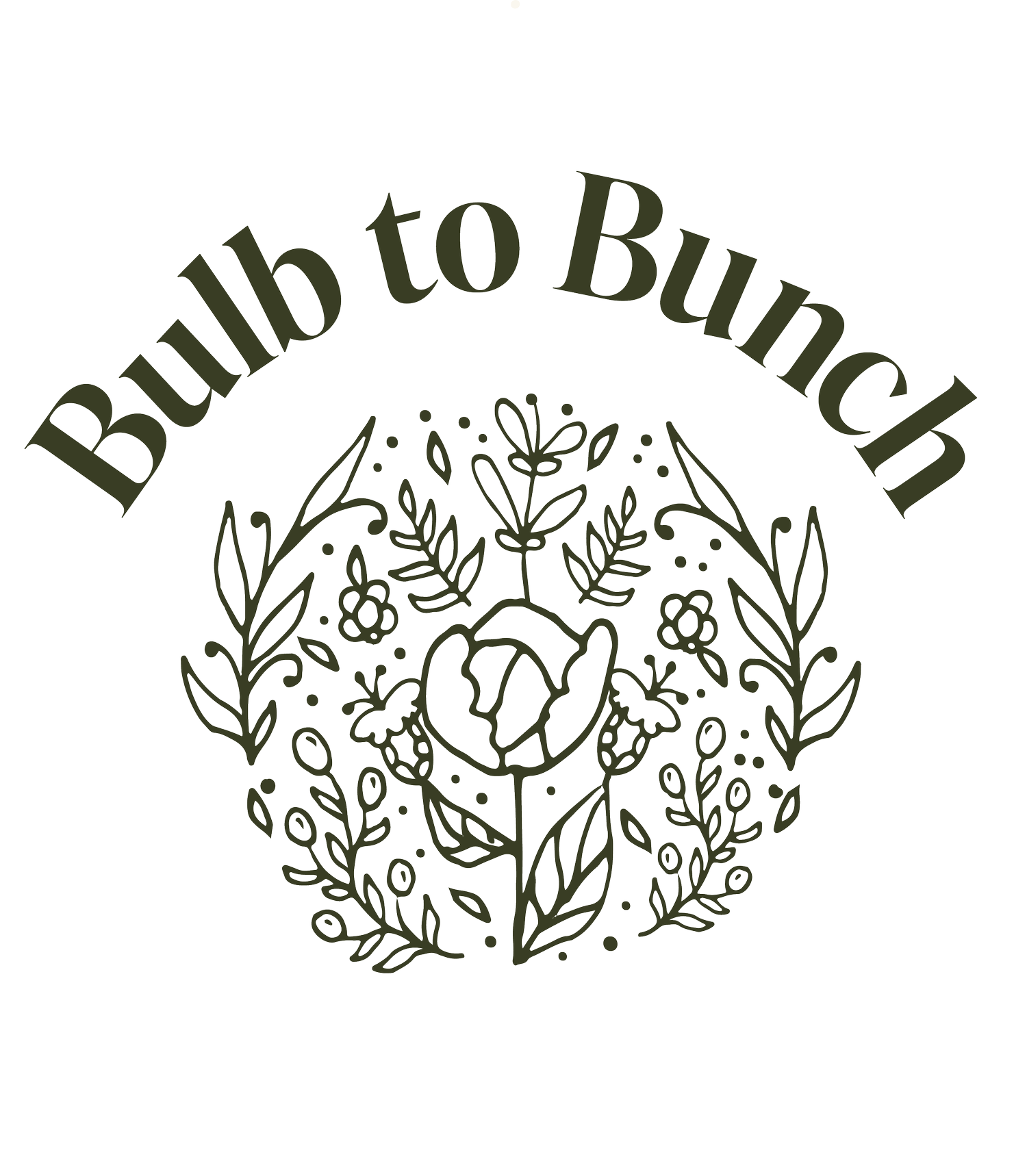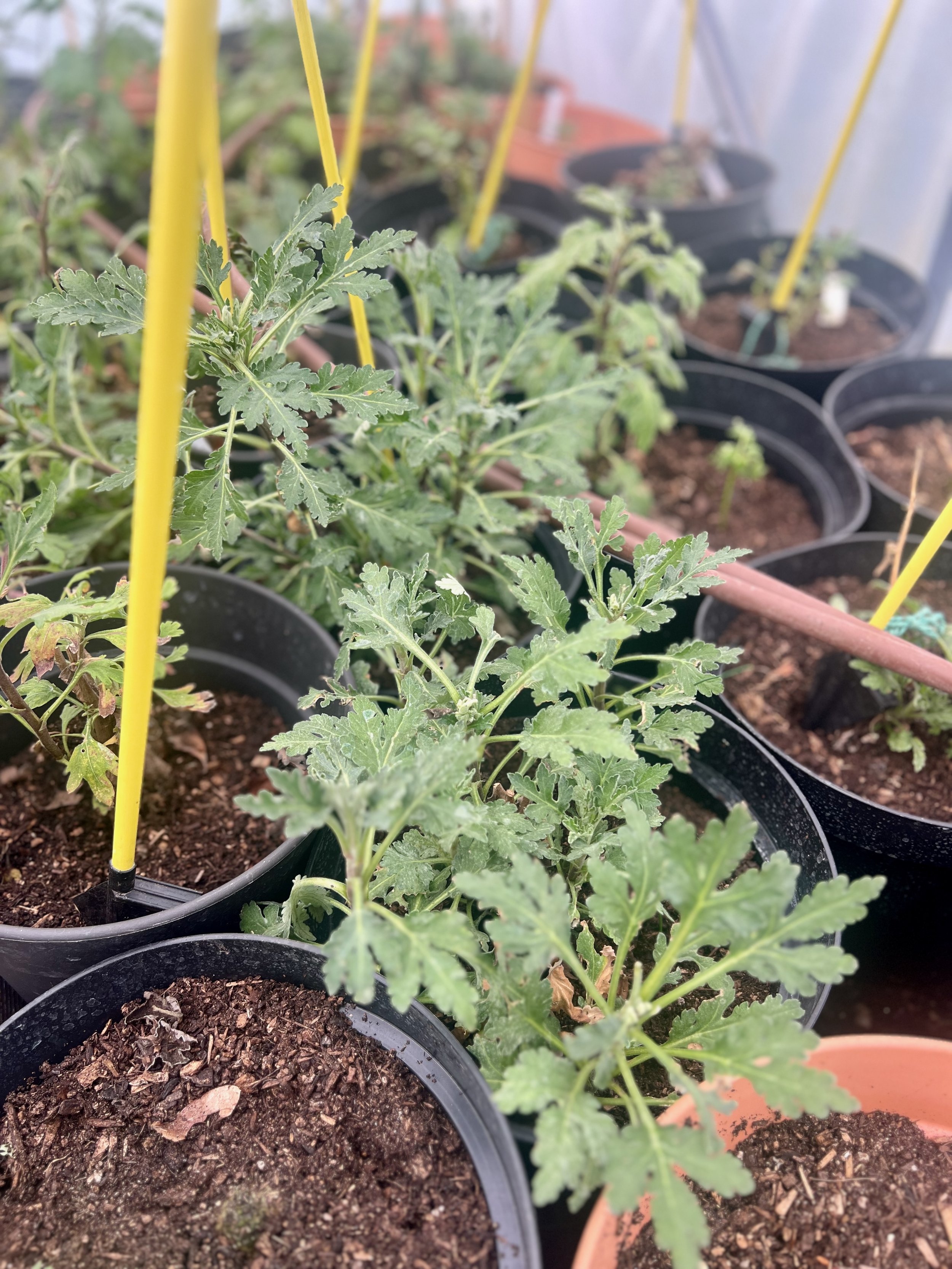Flower farm update - February 2025
February is a funny old month on the flower farm. When I look at the videos and photos, I have to admit - they’re a little uninspiring. But as a flower farmer, I can barely contain my excitement.
Clearing the beds
Normally, I clear and mulch the beds before Christmas. Last year, I didn’t get the chance. And actually, I’m glad I didn’t. Leaving the flowers to die back naturally has been great for the soil, beneficial for wildlife, and, as it turns out, better for me too—pulling out dead stalks is so much easier.
Getting up close and personal
As I’ve been working through the flower farm clearing the beds, I’ve had the chance to check in on each and every plant. Joy of joys—pretty much all the perennials are showing tiny shoots at their base. Now that’s exciting.
The raised beds and the first flower field have been cleared, cut back, weeded, and mulched. The second flower field is next on my list.
Worm karma
As I’ve been pulling up weeds, I’ve been uncovering a load of worms which is good to see. Every time I rescue one by putting it back under the soil, I like to think Mother Nature will reward me with healthy plants.
Seed sowing with a vengeance
I sowed some hardy annuals last September and overwintered them in the polytunnel. They’ve taken a hit from the freezing, frosty weather - I know how they feel - spring has felt like a long time coming.
My second succession was in mid-February. If you’re curious, that included achillea, agrostemma, feverfew, limonium, orlaya, penny cress, Persian cress, snapdragons (antirrhinums), stocks, and sweet peas.
I’ve also started on the ranunculus and anemones—hundreds of them!
But the real action starts in March when I sow the half-hardy annuals, keeping them in the polytunnel until after the last frost. That means the first plug trays of sunflowers and zinnias, along with cosmos and phlox.
I’ll now do a succession about every month.
As usual, I’m also sowing lisianthus. These are the flowers I never expect to grow—and yet somehow, every year, I do. They take forever to sprout and grow, but they’re always worth it.
What’s new this year
I’m a sucker for trialling new flowers.
Sometimes it works—I’m now a strawflower convert. Sometimes it doesn’t - geums were a waste of space, too small to be useful.
This year, I’m trying gladioli. Not the standard ones, but glorious colours and doubles. They’re no good for mixed bouquets, but they might work as bunches of five.
I’m also giving carnations a go. I used to think they were the most old-fashioned flowers on the planet, but some of the newer varieties have beautiful colours and frilly petals. Best of all, they’re being grown by small British growers. I have fifty arriving soon.
I can’t nick photos off the internet, so you’ll have to wait to see what they look like.
The jury’s still out on chrysanthemums
Chrysanthemums remain a bit of a mystery to me. I think the real issue is that I don’t know enough about growing them well, and online advice is all over the place. Some says you should only take cuttings from the basal shoots in the second year and compost the original plant.
But the ones I abandoned in the polytunnel over winter—completely neglected—are already getting going again. So, I think I’ll just leave them be and see what happens.
The compost king
In a tremendous step forward. we have big bins of our own lovely, crumbly homemade compost ready to use. Roger gets all the credit for this.
We know we should add more browns (leaves, wood chips, shredded cardboard) to the greens (flower waste, vegetable peelings, coffee grounds), so Roger chipped a load of lime tree suckers he cut back ready to go.
Winter reflections
Winter is always a time for reflection. Looking back on last year, I loved everything about working on the flower farm—the planning, the growing, the selling, and, most of all, the happiness flowers bring to anyone who receives them. The world could do with a lot more joy.
But making a go of it is tough. Visibility is a challenge - I need to step up my game on social media.
Making money is even harder. Take a regular bunch of flowers—25 stems—at an average of £1.00 per stem to grow, cut, and condition (which is in line with wholesale prices, though a Valentine’s lisianthus stem was £2.50!). That’s £25.00 before I even factor in £3.00 for wrapping, ribbon, and the delivery box—so £28.00 in total.
Then, say it takes me 30 minutes to make, wrap, and box up the bouquet for collection. At minimum wage, that’s another £6.00.
So, I’d need to charge £34.00 just to cover costs and pay myself the bare minimum.
Meanwhile, a mixed bouquet from a supermarket costs around £15.00. And, heaven forbid, you grab one from a petrol station, it’s even less.
I know my market and customers are different, but the reality is, I need to sell a lot of bouquets to make a sustainable income, and I’m nowhere near yet.
Plans for 2025
This year, I’ll be selling through Gastro Nicks deli in Collingbourne Ducis, run by the lovely Nick and Jane - they’ll be bunches for Mother’s Day using bought-in flowers in March, and then my own as soon as they’re available.
From July to October, we’ll be doing two farmers' markets a month—Romsey and Alresford.
Nationwide delivery of wreaths went better than expected, but Valentine’s bouquets didn’t. I’ll test the waters with nationwide deliveries of my own flowers over the summer for the first time.
I’ll also take on a limited number of weddings—for couples happy to have whatever is looking best and in season, and happy to collect their flowers directly from me.
Wholesale sales to florists will continue.
And then… we’ll see. My gap year (actually two) officially ends in September. I’ll always grow flowers, but I may need a few more side hustles—or even a full-time job again—by then.
Grounded | A space for slowing down and embracing life’s simple pleasures | www.bulbtobunch.com/blog
















